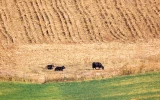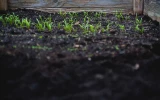The 17 Best States To Start a Small Farm in 2023
Starting a new farm in 2023 can be an exciting prospect for many entrepreneurs. And with the right resources and knowledge of where to put up a farm, you can turn your dreams into reality.
The 17 best states to start a farm in 2023 are New Hampshire, New Jersey, Connecticut, Massachusetts, Rhode Island, New Mexico, Wisconsin, Missouri, California, Louisiana, Alabama, Mississippi, Nevada, Montana, Wyoming, Oklahoma, and West Virginia.
When looking for the best state to start a small farm, we’ll consider factors such as price per acre, total land in farms, number of farms, average farm size, climate, and the common crops for planting. Let’s get started.
Summary
- New Hampshire, New Jersey, Connecticut, Massachusetts, and Rhode Island have the smallest average farms.
- Wyoming, Montana, Nevada and New Mexico rank at the top by having the largest average farm sizes
- Oklahoma, Montana, and Wyoming are the easiest states to start a farm
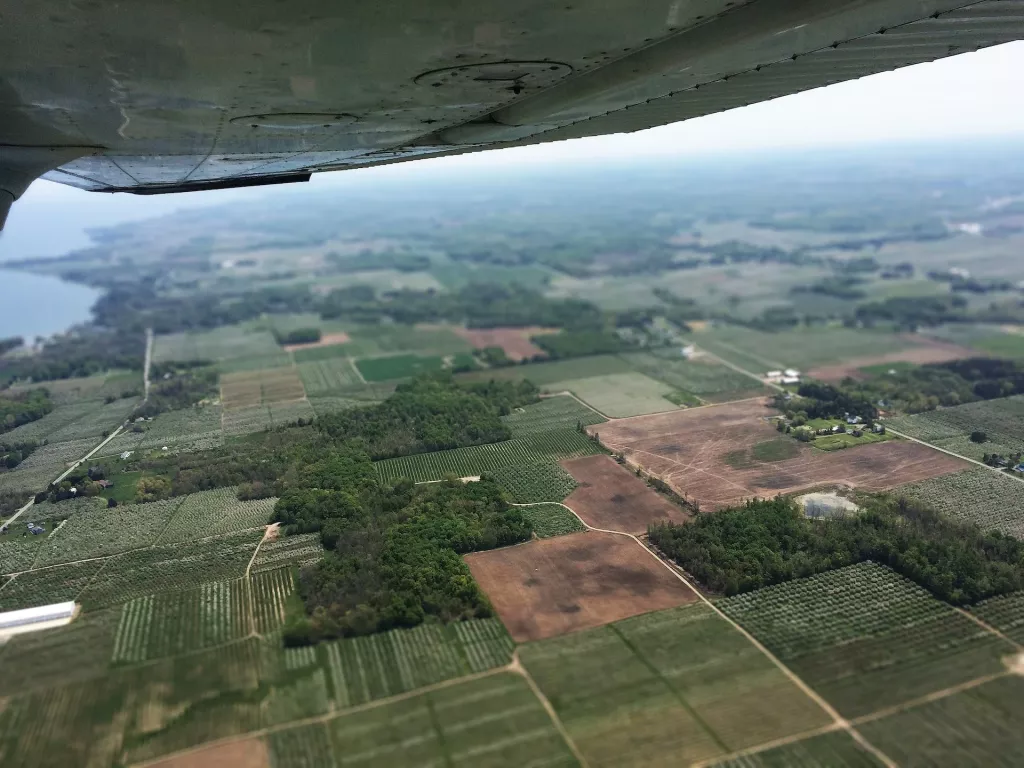
On this page:
Start Your Small Farm in These 17 Great States
Starting a small farm can be a tiring yet rewarding experience, so it’s important to choose the right location for your farm. Different states offer different sets of advantages and disadvantages. It’s crucial to do your research first before making any big decisions.
From access to local markets and agricultural programs to favorable soil conditions and climates, each state has something unique to offer aspiring farmers. Let's get to know each one.
1. Oklahoma is an attractive option for those who are looking to start a farm
Overall, Oklahoma ranks 22nd in the United States for production and sales of merchandise, accounting for nearly 2% of national merchandise sales. The state has plenty of natural resources that can help farmers get started on the right foot.
Good climate conditions, fertile soil, and a low cost of living make Oklahoma an attractive state for those who want to pursue their dreams of owning a small farm.
| Oklahoma Farming Statistic | Data Result |
|---|---|
| Average farmland price per acre | $1,690 |
| Total land in farms (acres) | 35.1 million |
| Number of farms | 86,000 |
| Average farm size (acres) | 435 |
| Climate type | ranges from humid subtropical in the east to semi-arid in the west |
| Crops and commodities | winter wheat, hay, cotton, soybeans, corn for grain, pecans, peanuts, watermelons and rye |
2. Wyoming's fertile soils makes it a great state to start a small farm
Agriculture ranks among Wyoming's top three industries and has a significant impact on the state's economy, especially cattle production. Wyoming has long been known for its excellent cattle production, with more than 60% of the state's farm income coming from the sale of cattle and calves.
Additionally, hay is also produced in abundance in Wyoming and is widely used as fodder to feed cattle. Wyoming's riverbeds also have fertile soils where corn, sugar beets, dried beans, and barley grow.
| Wyoming Farming Statistic | Data Result |
|---|---|
| Average farmland price per acre | $2,430 |
| Total land in farms (acres) | 30 million |
| Number of farms | 11,000 |
| Average farm size (acres) | 2,430 |
| Climate type | relatively cool |
| Crops and commodities | sugarbeets, dry edible beans, barley, corn, oats and hay |
3. Louisiana's farmland is ideal for a small crop farm
Agriculture is one of Louisiana’s top five industries. Agriculture plays a crucial role in the state’s economy, generating more than $3.2 billion in revenue.
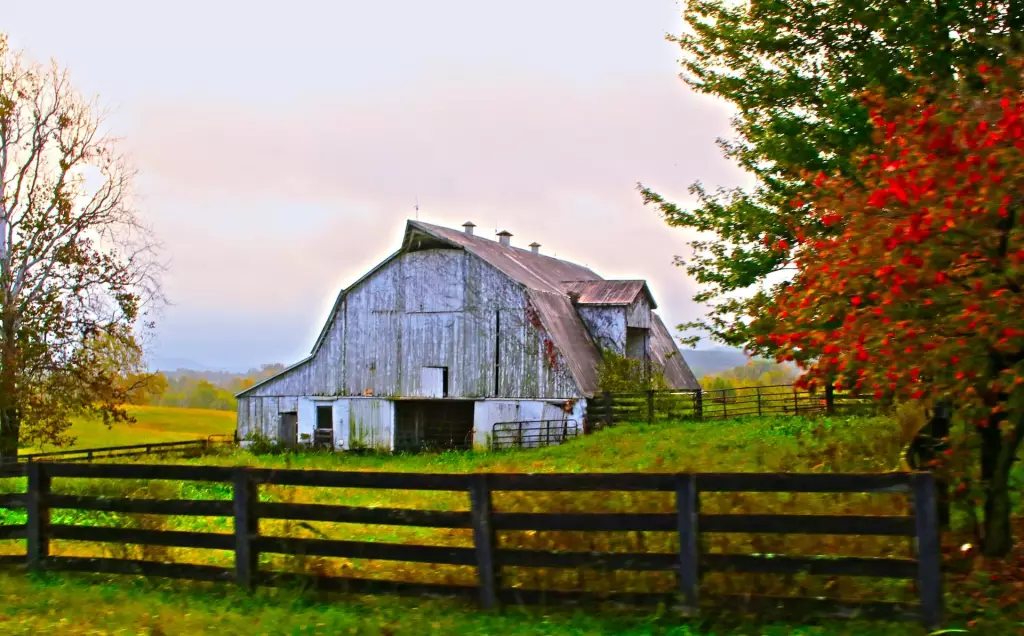
Farmland in Louisiana has benefited from its location on the banks of the Mississippi River. The Mississippi River has long left nutrient-rich alluvial deposits ideal for growing crops.
| Louisiana Farming Statistic | Data Result |
|---|---|
| Average farmland price per acre | $2,803 |
| Total land in farms (acres) | 8 million |
| Number of farms | 27,385 |
| Average farm size (acres) | 370 |
| Climate type | humid subtropical |
| Crops and commodities | sugarcane, soybeans, corn, rice, cotton, sweet potatoes, pecans, crawfish, shrimp, alligators, and oysters |
4. Montana has affordable land prices for a small farm
Montana is a great place to start a small farm. Not only is the state known for its beautiful landscapes and stunning views, but it also offers plenty of opportunities to start a successful small farm. In fact, Montana's diverse farm produce makes it one of Montana's largest industries. Nearly 65% of this production is cattle and wheat, making Montana the nation's third-largest exporter.
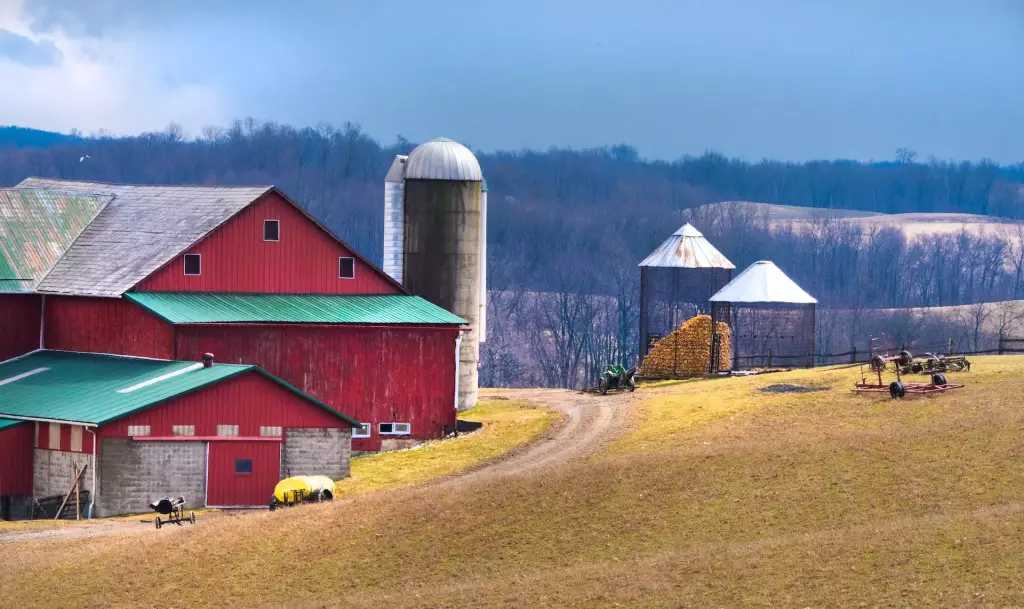
The state has plenty of open land, favorable climate conditions, and access to resources like irrigation systems and agricultural supplies. Plus, Montana has some of the most affordable land prices in the country, making it an ideal location for those looking to start their own farming business.
| Montana Farming Statistic | Data Result |
|---|---|
| Average farmland price per acre | $3,000 |
| Total land in farms (acres) | 59.7 million |
| Number of farms | 28,000 |
| Average farm size (acres) | 2,149 |
| Climate type | mostly cold year around with short summers and freezing winters |
| Crops and commodities | wheat, hay, barley, sugarbeets dairy products, hogs, sheep and cattle |
5. West Virginia offers opportunities for a small livestock farm
West Virginia has a hilly or mountainous terrain, so much of the state’s agricultural ecosystem revolves around livestock, poultry, and agricultural products, which account for 80% of the state’s agricultural income. West Virginia offers opportunities for forestry, livestock production, and hunting.
Nearly 24% of all land in West Virginia is used for farmland, rangeland, and timber farms, totaling 3.6 million acres.
| West Virginia Farming Statistic | Data Result |
|---|---|
| Average farmland price per acre | $3,270 |
| Total land in farms (acres) | 3.6 million acres |
| Number of farms | 22,300 |
| Average farm size (acres) | 157 |
| Climate type | humid continental except for a marine modification in the eastern panhandle |
| Crops and commodities | hay, apples, corn, soybeans, tobacco, peaches |
6. Alabama is a strong state for small poultry farms
Alabama grows a wide variety of crops and is one of the nation's largest producers of poultry and livestock. Once known as the "Cotton State," Alabama ranks eighth as the largest cotton exporter, but today poultry, cattle, grain, and seedlings are ahead of cotton in sales rankings. Agriculture is one of Alabama's top industries, and more than one-fifth of the jobs in the state are related to agriculture.
| Alabama Farming Statistic | Data Result |
|---|---|
| Average farmland price per acre | $3,500 |
| Total land in farms (acres) | 8.5 million |
| Number of farms | 40,592 |
| Average farm size (acres) | 211 |
| Climate type | temperate |
| Crops and commodities | peanuts, cotton, corn, soybean, wheat, aquaculture, livestock, poultry |
7. Mississippi allows farmers to grow a diverse range of crops
According to the latest Agriculture Census, agriculture remains one of Mississippi's most important industries, contributing $6.2 billion to the economy annually. The state is made up of several regions with varying landscapes, each with its own characteristics, allowing farmers to grow an equally diverse range of crops.
The fertile delta region is known as one of the world's leading producers of cotton and other cash crops.
| Mississippi Farming Statistic | Data Result |
|---|---|
| Average farmland price per acre | $3,617 |
| Total land in farms (acres) | 10.4 million |
| Number of farms | 34,700 |
| Average farm size (acres) | 300 |
| Climate type | humid subtropical |
| Crops and commodities | cotton, rice, hay, wheat, corn, sweet potatoes, and pecans |
8. Nevada is a great state for small alfalfa farms
Due to its desert climate and limited water resources, first-time farmers may experience some challenges when starting a small farm. However, with proper research and choosing the right crops to plant, it is possible to have a successful small farm in Nevada.
For example, demand for locally grown produce is growing in the state, and farmers may specialize in drought-tolerant crops such as alfalfa, hay, and cotton.
Additionally, agriculture is one of Nevada’s most important industries. Agricultural production is mostly aimed towards ranged livestock like cattle, hogs, and sheep.
| Nevada Farming Statistic | Data Result |
|---|---|
| Average farmland price per acre | $4,108 |
| Total land in farms (acres) | 5.8 million |
| Number of farms | 2,900 |
| Average farm size (acres) | 1,790 |
| Climate type | mostly desert and semi-arid |
| Crops and commodities | alfalfa hay, alfalfa seeds, potatoes, barley, wheat, rye, oats, vegetables, mind, garlic and onions, cattle, hogs, and sheep |
9. New Mexico's low cost of living makes it an attractive option for a small farm
Agriculture has been an integral part of New Mexico's economy and way of life since the state's birth. Despite its dry climate, New Mexico uses crop irrigation to produce a variety of commodities and has an agricultural industry worth more than $2.5 billion.
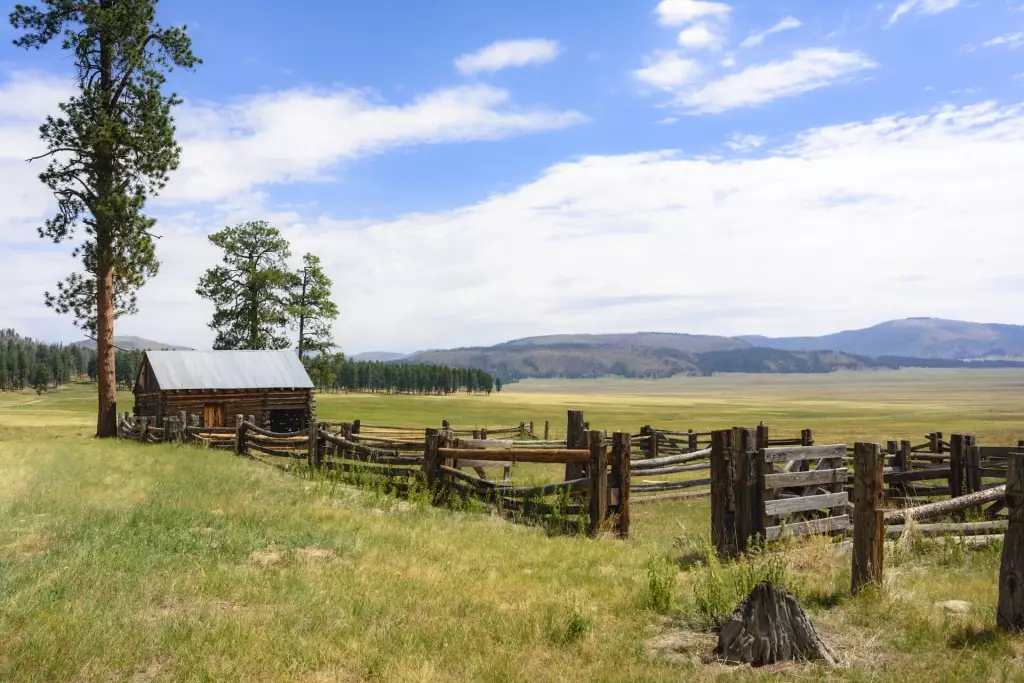
With its dry climate, fertile soil conditions, and abundance of natural resources, New Mexico offers small farmers opportunities to grow a variety of crops and livestock. Additionally, the state’s low cost of living makes it an attractive option for those who’re looking for budget-friendly ways to start a farm.
| New Mexico Farming Statistic | Data Result |
|---|---|
| Average farmland price per acre | $4,328 |
| Total land in farms (acres) | 40 million |
| Number of farms | 25,044 |
| Average farm size (acres) | 1,619 |
| Climate type | dry |
| Crops and commodities | cotton, peanuts, wheat, corn, peppers, hay, and pecans |
10. Missouri is a leading producer of corn, cotton, rice, turkey, and goats
Agricultural land is abundant in Missouri, especially in the Boot Heel region. providing fertile soil and abundant water sources for the production of many agricultural products.
Missouri is a leading U.S. producer of a variety of commodities, including beef cattle, rice, turkey, goats, cotton, and corn. It also produces some of the highest-quality timber in the country and contributes over $9.7 billion to the economy through exports.
| Missouri Farming Statistic | Data Result |
|---|---|
| Average farmland price per acre | $4,747 |
| Total land in farms (acres) | 27.7 million |
| Number of farms | 95,320 |
| Average farm size (acres) | 291 |
| Climate type | continental |
| Crops and commodities | soybeans, corn, cotton, rice, hay, cattle and calves, hogs, turkeys, goats, chicken, horses |
11. Wisconsin is the best state to start a dairy farm
Popular for its dairy and cheese products, Wisconsin is a great place to start a small farm. It has a favorable climate, and the soil is fertile due to the buildup of glacial deposits over thousands of years. Because of those factors, the state has a strong tradition of agriculture, with hard-working farmers tending to their farms.
Additionally, the state’s location in the Midwest allows farmers access to major markets and accessible transportation routes, making it easy for farmers to get their products to the market.
| Wisconsin Farming Statistic | Data Result |
|---|---|
| Average farmland price per acre | $4,770 |
| Total land in farms (acres) | 14.2 million |
| Number of farms | 64,100 |
| Average farm size (acres) | 222 |
| Climate type | continental humid which means warm humid summers and cold snowy winters |
| Crops and commodities | potatoes, corn, snap beans, cranberries, Christmas trees, dairy, and wheat |
12. New Hampshire's local farming community helps each other during tough times
New Hampshire offers several advantages, like a favorable climate with moderate temperatures and good precipitation for crops to flourish. The diverse soils can also support a wide variety of crops and livestock. Additionally, the local farming community has a long tradition of supporting and helping each other during tough times.
With strategic planning and lots of consistent hard work, small farmers in New Hampshire have the potential to build a successful and sustainable farming operation that can provide a good income and a sustainable way of life.
| New Hampshire Farming Statistic | Data Result |
|---|---|
| Average farmland price per acre | $4,980 |
| Total land in farms (acres) | 430,000 |
| Number of farms | 4,400 |
| Average farm size (acres) | 105 |
| Climate type | humid, continental |
| Crops and commodities | greenhouse and nursery products, Christmas trees, sweet corn, chicken eggs and apples, hay, and various vegetables and forest products |
13. Massachusetts has developed good programs for small farmers
Massachusetts is well-known for its thriving agricultural community. It offers a large consumer market for local and organic products. In addition, the state has developed good programs for supporting small farmers, including a farmer’s market scene, farm-to-table restaurants, and supportive organizations.
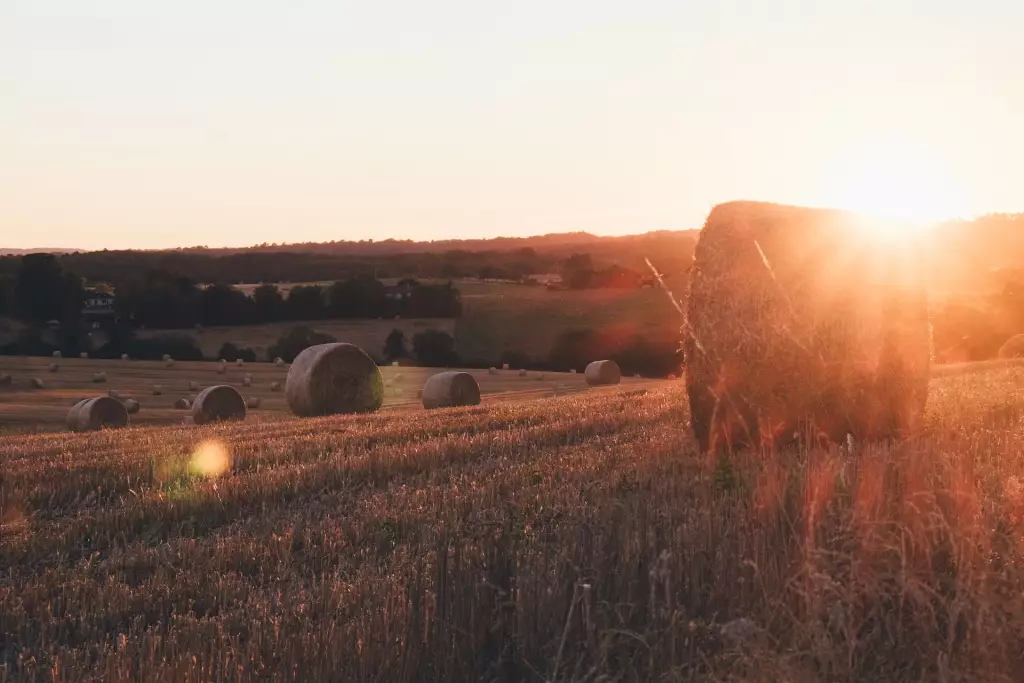
Small farmers who are committed and passionate about farming can find success in Massachusetts. With a high focus on growing high-value crops, developing a strong brand, and building relationships with local consumers and businesses, small farmers can thrive and make a profit from their farming endeavours.
| Massachusetts Farming Statistic | Data Result |
|---|---|
| Average farmland price per acre | $10,800 |
| Total land in farms (acres) | 491, 653 |
| Number of farms | 7,241 |
| Average farm size (acres) | 68 |
| Climate type | humid continental |
| Crops and commodities | greenhouse and nursery commodities, cranberries, sweet corn, apples, and dairy products |
14. Connecticut has many opportunities to find markets for produce
Connecticut has a rich agricultural history and offers ample resources for those looking to start their own farm. It has a favorable climate for a longer growing season, access to markets, and plenty of resources for farmers, like having the best fertile soil among the states.
Additionally, Connecticut is home to many successful farms that can serve as examples for aspiring farmers. The state has a network of small farmers and many opportunities to find markets for produce.
| Connecticut Farming Statistic | Data Result |
|---|---|
| Average farmland price per acre | $12,200 |
| Total land in farms (acres) | 380,000 |
| Number of farms | 5,521 |
| Average farm size (acres) | 69 |
| Climate type | a mild climate that allows for a longer growing season |
| Crops and commodities | apples, hay, dairy products, shellfish (including clams and oysters), tobacco and maple syrup |
15. New Jersey has a large market for crops and livestock
With its favorable climate and enriched soil, New Jersey has many resources to make farming successful. One advantage is that New Jersey is on the northeastern coast. This provides farmers with access to a large market for crops and livestock.
The only downside to starting a small farm in New Jersey is that it can be expensive. However, with the right guidance, anyone can take advantage of these resources to make their farming endeavors a success.
| New Jersey Farming Statistic | Data Result |
|---|---|
| Average farmland price per acre | $14,400 |
| Total land in farms (acres) | 750,000 |
| Number of farms | 10,000 |
| Average farm size (acres) | 76 |
| Climate type | moderately cold and occasionally snowy winters and warm, humid summers |
| Crops and commodities | blueberry, cranberries, peaches, tomatoes, bell peppers, eggplant, cucumbers, apples, spinach, squash, and asparagus |
16. California farmers grow a variety of crops not grown elsewhere in the country
When it comes to farm income, California leads all other U.S. states and produces the most diverse commodities in the country. Farmers can grow a great variety of crops, including those not grown elsewhere in the country.
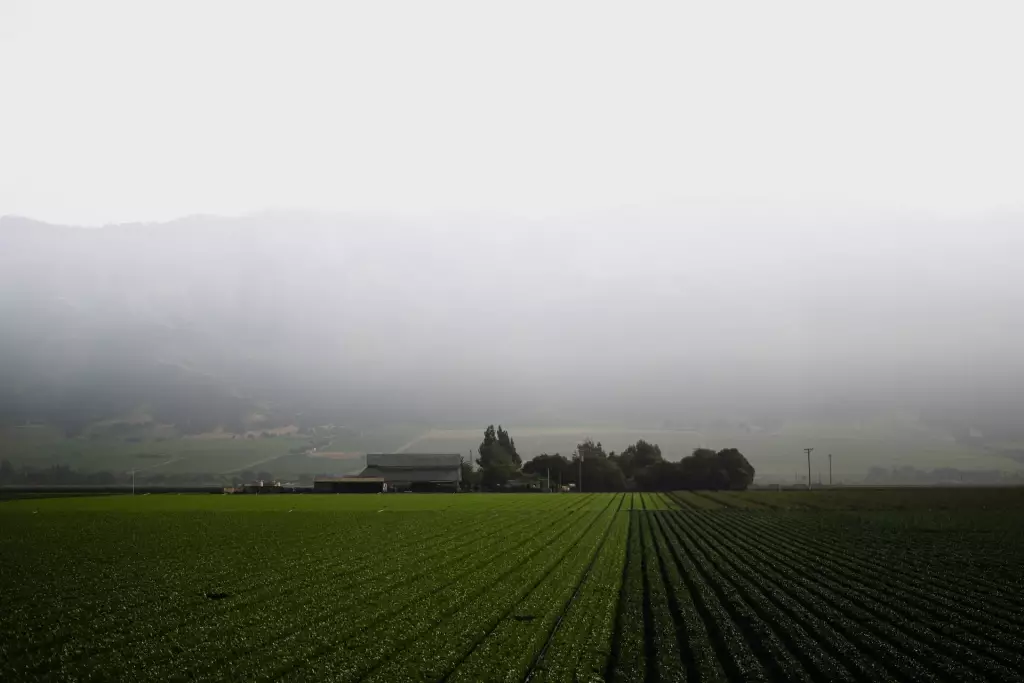
California produces the majority of its specialty products, such as almonds, walnuts, apricots, dates, and figs, which are grown in the United States and, in some cases, around the world.
| California Farming Statistic | Data Result |
|---|---|
| Average farmland price per acre | $14,867 |
| Total land in farms (acres) | 24.5 million |
| Number of farms | 70,521 |
| Average farm size (acres) | 348 |
| Climate type | Mediterranean |
| Crops and commodities | almonds, walnuts, apricots, dates, and figs |
17. Rhode Island's agricultural community is very supportive of new farmers
Rhode Island has a small but growing agricultural sector focused on local, sustainable food production. Close proximity to major urban centers such as Boston and New York City makes it easier for small farmers to access local markets and reach customers.
Additionally, the state’s mild weather and long growing season make it perfect for growing a wide variety of vegetables, fruits, and other crops. Rhode Island’s agricultural community is also very supportive of new farmers and offers many resources to help them get started.
However, starting a small farm in Rhode Island can be costly. Due to the state’s small size and how close it is to major urban centers, land prices can be expensive, and there’s tougher competition against larger, more well-established farms.
| Rhode Island Farming Statistic | Data Result |
|---|---|
| Average farmland price per acre | $16,400 |
| Total land in farms (acres) | 69,000 |
| Number of farms | 1,100 |
| Average farm size (acres) | 56 |
| Climate type | humid continental |
| Crops and commodities | greenhouse and nursery products, dairy products, sweet corn, aquaculture (seafood), apples, and potatoes |

